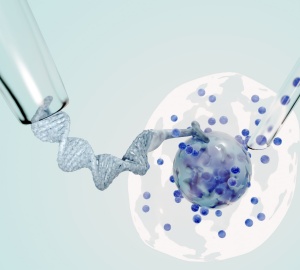
Nucleic acid purification, also known as nucleic acid extraction or isolation, is a crucial process in molecular biology research. Understanding the techniques and principles behind nucleic acid purification is essential for obtaining high-quality DNA or RNA samples for various downstream applications. In this blog post, we will explore the intricacies of nucleic acid purification, its purpose, common techniques used, factors affecting the process, and its applications.
An overview of nucleic acid purification
DNA and RNA are the two primary types of nucleic acids found in cells. DNA carries the genetic information, while RNA plays a crucial role in gene expression and protein synthesis. For optimal performance in the lab, nucleic acids must be extracted and cleaned to remove impurities and allow for analysis of pure DNA or RNA samples. By removing contaminants and unwanted cellular debris, researchers can ensure reliable and accurate results in subsequent experiments.
Basic steps of nucleic acid purification
The process of nucleic acid purification is critical in molecular biology. Isolated DNA and RNA are required in a range of applications, including polymerase chain reactions (PCR) and next-generation sequencing (NGS). Nucleic acid purification involves several fundamental steps:
Sample collection and lysis
The first step is cell lysis, as both the cell membrane and nucleus need lysing to release nucleic acid content. This cell lysis step can be carried out through chemical, enzymatic or physical methods or by combining these techniques.1 In some instances, the cell lysates may require additional debris removal steps before purification to reduce excess contaminants during the purification process.
Purification / isolation
During this stage, proteins and other unwanted contaminants are removed from the nucleic acids, including cellular components such as proteins, lipids, and inhibitors. This process requires several steps, although new technologies, such as the ZymoPURE™ plasmid DNA purification kits and Quick-DNA/RNA kits from Zymo Research, are available to simplify the workflow. When carried out manually, the process chosen will depend on the available equipment, required purity, sample type, and downstream application.2
Concentration
The purified nucleic acids are concentrated to meet the requirements of downstream applications. The concentration levels can be determined through a selection of methods, including fluorometry, gel electrophoresis and spectrophotometry.3 One of the most common quantification methods is spectrophotometry. When using spectrophotometry, the concentration of nucleic acid in a sample can be determined using the Beer-Lambert law, a fundamental principle in spectrophotometry. This law establishes a direct relationship between the absorbance of light by a sample and its concentration of nucleic acid.4 By measuring the absorbance at a specific wavelength, researchers can quantitatively determine the concentration in the sample.
Factors affecting nucleic acid purification
Various factors can influence the efficiency and success of nucleic acid purification, including sample type, source, and volume, desired DNA or RNA yield and quality, presence of inhibitors or contaminants, and the availability of automation and scalability options. Nucleic acid purification is important in areas of clinical testing, forensic analysis and molecular biology, to name a few, making it critical for later applications that these factors are carefully considered before starting the purification process.
Cambridge Bioscience and nucleic acid purification solutions
With over 30 years of experience working with life science researchers, we know you have important decisions to make when choosing products and services for your research. We’re here to support you so you can focus on your next discovery.
Our partners at Zymo Research have developed innovative nucleic acid purification and clean-up technologies, enabling the simple and rapid isolation of high-yield, inhibitor-free nucleic acid from diverse sample sources. These include the Quick-DNA™ kits and Quick-RNA kits, as well as the ZymoPURE™ plasmid DNA purification kits.
Contact us today to learn more about effective nucleic acid purification solutions.
References
- Gupta, N., 2019. DNA extraction and polymerase chain reaction. Journal of cytology, 36(2), pp.116-117.
- Larramendy, M. and Soloneski, S. eds., 2016. Nucleic Acids: From Basic Aspects to Laboratory Tools. BoD–Books on Demand.
- https://www.bioscience.co.uk/cpl/precast-page-gels-surepage
- Sukumaran, S., 2011. Concentration determination of nucleic acids and proteins using the micro-volume bio-spec nano spectrophotometer. JoVE (Journal of Visualized Experiments), (48), p.e2699.
